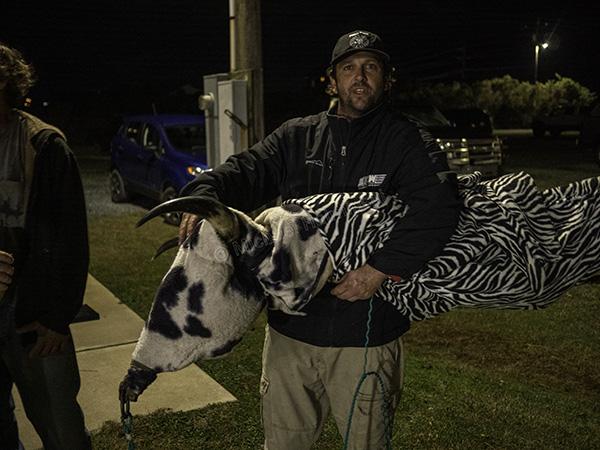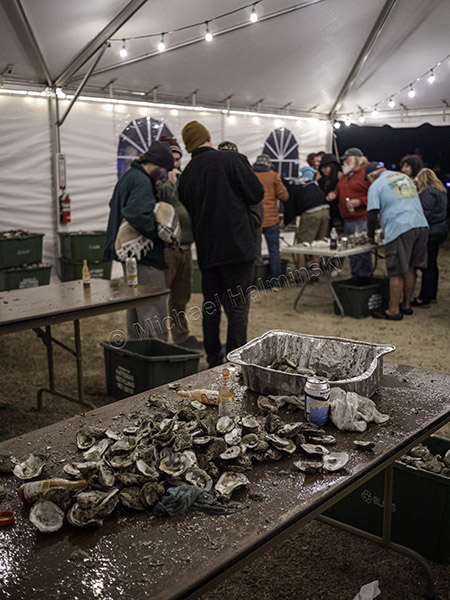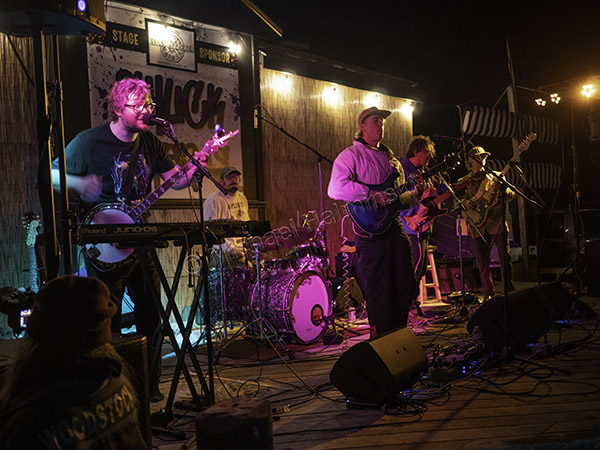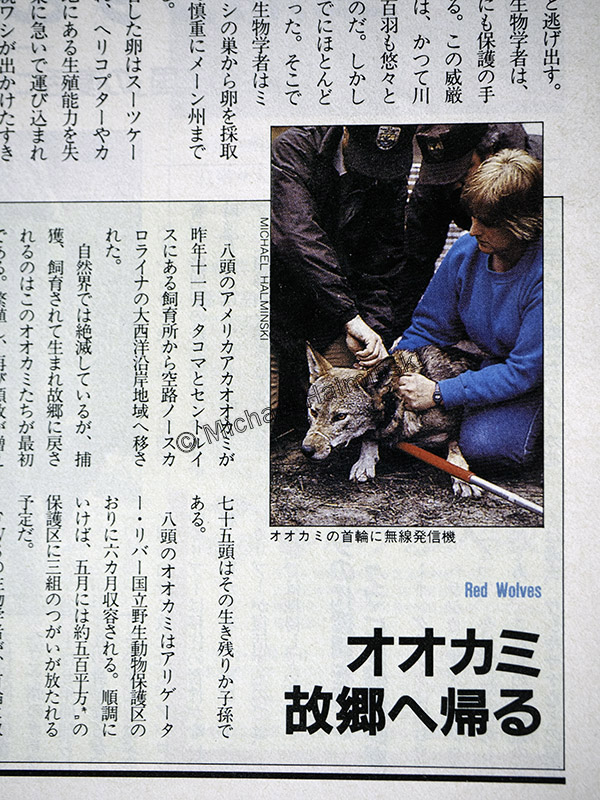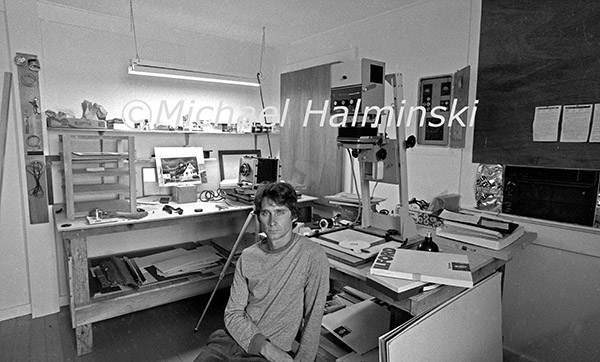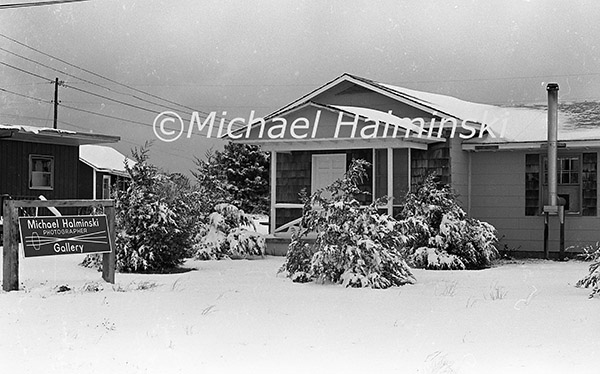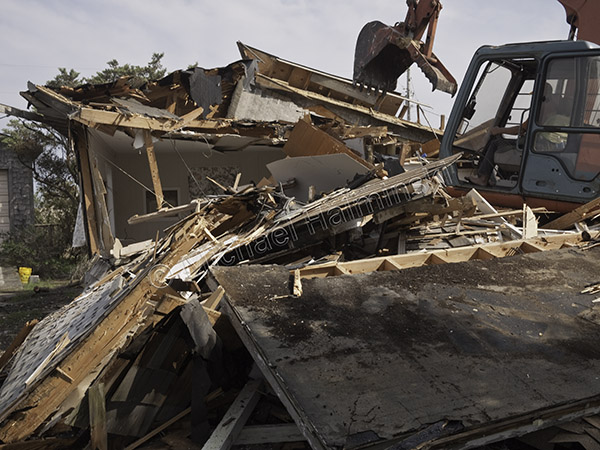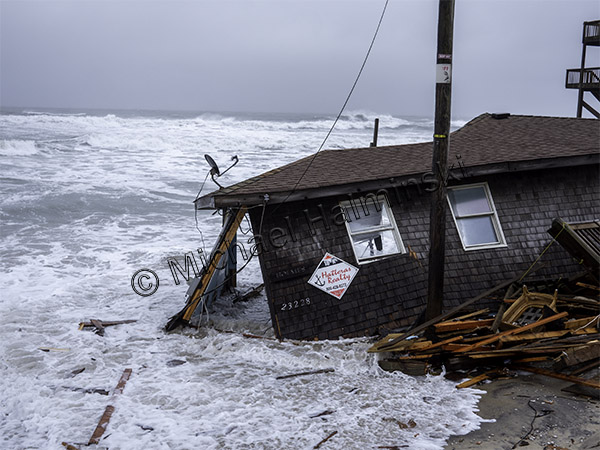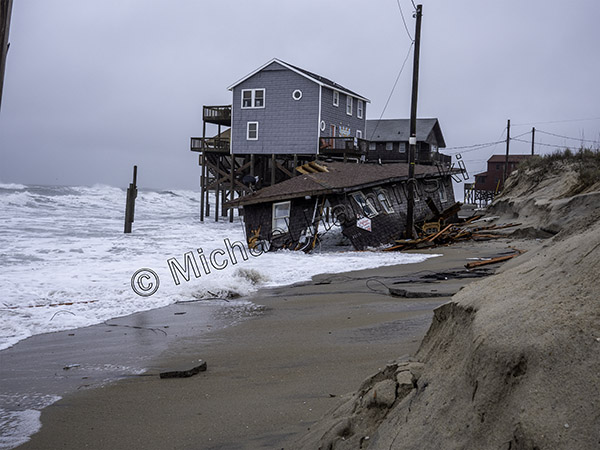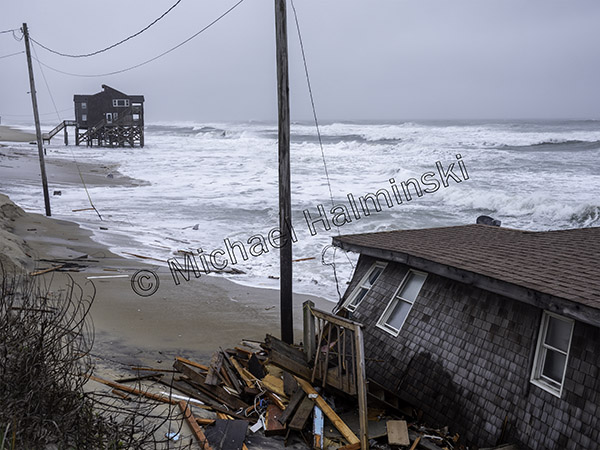Relocating here some fifty years ago, there were not many businesses where to find necessities. The general store at North Beach Campground was an exception, and I became a frequent customer. Locally operated, the O’Neal family was warm, accommodating and we became great friends.
A decade or so later, Justin was born to Joey and Virginia O’Neal. I watched the toddler grow in to a lovely boy, then to a man. Rodanthe was his “oyster”, where he worked and played. He developed a keen appreciation for his island heritage and was eager to pass it on.
Justin with son Owen at Chicamacomico in 2018.
I relish my interaction with him at Old Christmas celebrations where he was a caretaker to Old Buck, a role that has been passed down for generations.
Justin was perfectly suited for the task and took pride in it.
Justin recently passed away unexpectedly at the age of 39.
I’ll forever hold him, and the extended O’Neal clan in my heart.





